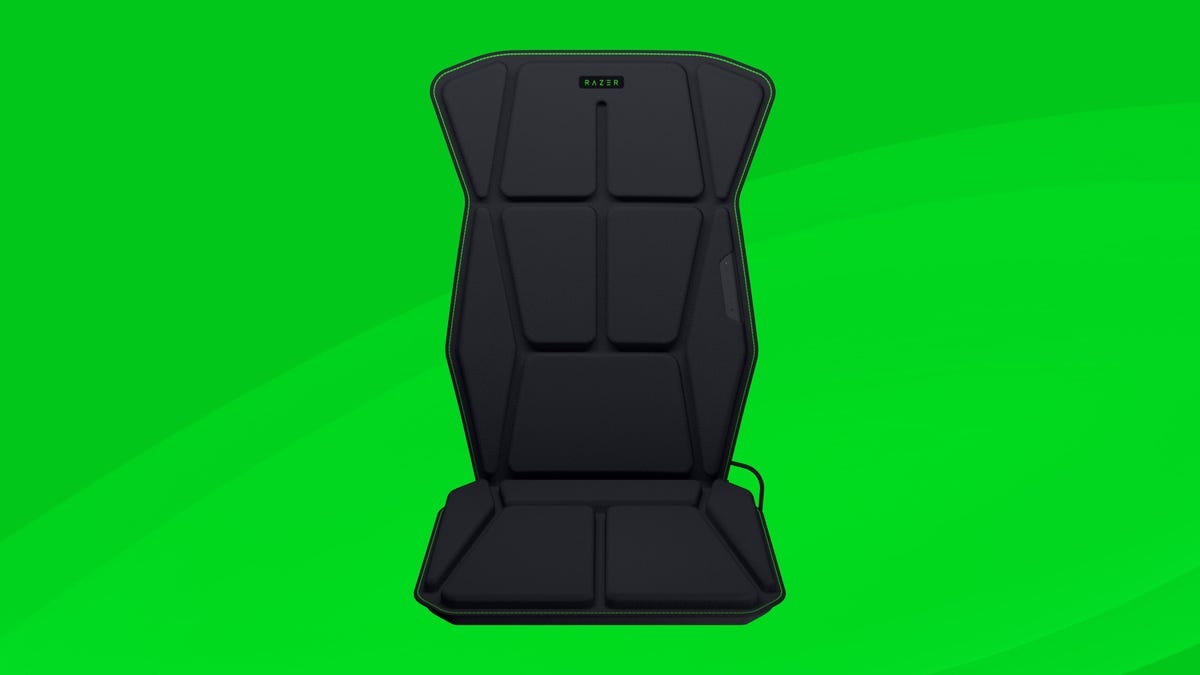Project Esther Gaming Cushion Concept Showcases Razer's New Vibrations
Razer shows off its new Sensa HD Haptics technology with a concept for a gaming chair cushion.

I was never a big fan of Razer's HyperSense haptics technology -- the vibrations never seemed to match up with what I expected, and it was incorporated only into headsets, which didn't make much sense to me perceptually. Now the company's replacing it with a new generation of vibration, which it calls Sensa HD Haptics. Project Esther, an add-on gaming chair cushion unveiled at CES, is the first demonstration Razer's held of the new technology, which comes via its acquisition of Interhaptics in 2022.
Read more: CNET's Picks for Best of Show, The Most Exciting, Innovative and Impactful Tech Winners of CES 2024
A chair cushion makes a lot more sense than a headset, though it can be integrated into multiple types of products thanks to the complete developers' kit, which allows game creators to control directionality, mixed intensities based on locations and the ability to integrate across devices for coordinated feels. In addition to in-game support, the software can convert audio to haptics on the fly, hopefully better than HyperSense ever did.
The front and back of the cushion.
The "HD" reflects the broad frequency range it supports, which theoretically can deliver more accurate sensation. Project Esther has 16 actuators positioned around the cushion intended to provide better sensations of direction, distance and location.
This implementation seems a lot more developed and commercially viable than a lot of Razer's previous CES concepts, at least in the absence of pricing, which is one of the big issues the company usually runs into. In this case, the cushion straps onto a chair -- and not just Razer's own chairs, which makes a big difference, and it works in conjunction with Razer's HyperSpeed Wireless. Wired would just be... no.
The cushion attached to Razer's Enki Pro chair.
A lot would be riding on the materials, because durability and comfort are obviously key factors, assuming the technology works well. Because it's still a concept, Razer hasn't shared any pricing or availability, or even what other products Sensa HD might appear in.

